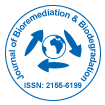Nosso grupo organiza mais de 3.000 Séries de conferências Eventos todos os anos nos EUA, Europa e outros países. Ásia com o apoio de mais 1.000 Sociedades e publica mais de 700 Acesso aberto Periódicos que contém mais de 50.000 personalidades eminentes, cientistas de renome como membros do conselho editorial.
Periódicos de acesso aberto ganhando mais leitores e citações
700 periódicos e 15 milhões de leitores Cada periódico está obtendo mais de 25.000 leitores
Indexado em
- Índice de Fonte CAS (CASSI)
- Índice Copérnico
- Google Scholar
- Sherpa Romeu
- Abra o portão J
- Genâmica JournalSeek
- Chaves Acadêmicas
- JornalTOCs
- PesquisaBíblia
- Infraestrutura Nacional de Conhecimento da China (CNKI)
- Diretório de Periódicos de Ulrich
- Acesso à Pesquisa Online Global em Agricultura (AGORA)
- RefSeek
- Universidade Hamdard
- EBSCO AZ
- OCLC – WorldCat
- Catálogo online SWB
- Publons
- Fundação de Genebra para Educação e Pesquisa Médica
- MIAR
- ICMJE
Links Úteis
Diários de acesso aberto
Compartilhe esta página
Abstrato
Carbonate Reservoirs Petrophysical Analysis of Bai Hassan Oil Field North of Iraq
Qays Mohammed Sadeq and Wan Ismail Wan Bin Wan yusoff
Bai Hassan Field is one of several elongated, asymmetrical, doubly plunging anticlines in northern Iraq. This field occupies a stratigraphically complex area comprising multiple facies developments of a complicated digenetic history. Abundant and variable porosity and permeability exist which, although primarily lithology dependent, are enormously enhanced by the development of intensive faults, fractures and joints, this combination ofuncommonly high porosity and permeability gives rise to enormously high and continuous production. The initial petrophysical interpretation consisted of a two-phase workflow. The first interpretation phase consisted of calculating both the dry mineral volumes such as calcite and dolomite and the total porosity using a matrix solution procedure. For a full suite of lithology and porosity, measurements (gamma ray, sonic, density, and neutron) up to four mineral components plus porosity were calculated. If fewer measurements were available, simpler lithology models were employed. Standard lithology models were set up for the observed assemblages of rock types. For example, models for the calcite-dolomite-anhydrite-porosity assemblage and the dolomite-calcite-clay-porosity assemblage were set up. When available, core data were used to check the interpretation model results and to adjust the model. The second interpretation phase calculated the water saturation using the Archie water saturation equation.
Diários por Assunto
- Agro e Aquicultura
- Alimentação e Nutrição
- Bioquímica
- Ciência da Computação
- Ciência de materiais
- Ciencias ambientais
- Ciências Clínicas
- Ciências Farmacêuticas
- Ciências gerais
- Ciências Médicas
- Ciências Sociais e Políticas
- Ciências veterinarias
- Economia e Contabilidade
- Enfermagem e cuidados de saúde
- Engenharia
- Engenheiro químico
- Física
- Genética e Biologia Molecular
- Geologia e Ciências da Terra
- Gestão de negócios
- Imunologia e Microbiologia
- Informática
- Matemática
- Química
Revistas clínicas e médicas
- Anestesiologia
- Assistência médica
- Biologia molecular
- Cardiologia
- Cirurgia
- Dermatologia
- Diabetes e Endocrinologia
- Doenças infecciosas
- Enfermagem
- Fisioterapia e Reabilitação
- Gastroenterologia
- Genética
- Hematologia
- Imunologia
- Medicamento
- Medicina Reprodutiva
- Microbiologia
- Nefrologia
- Neurologia
- Odontologia
- Oftalmologia
- Oncologia
- Ortopedia
- Pediatria
- Pesquisa Clinica
- Pneumologia
- Psiquiatria
- Toxicologia

 English
English  Spanish
Spanish  Chinese
Chinese  Russian
Russian  German
German  French
French  Japanese
Japanese  Hindi
Hindi